Published: Apr 02, 2020
6 reasons why no one is talking to your chatbot
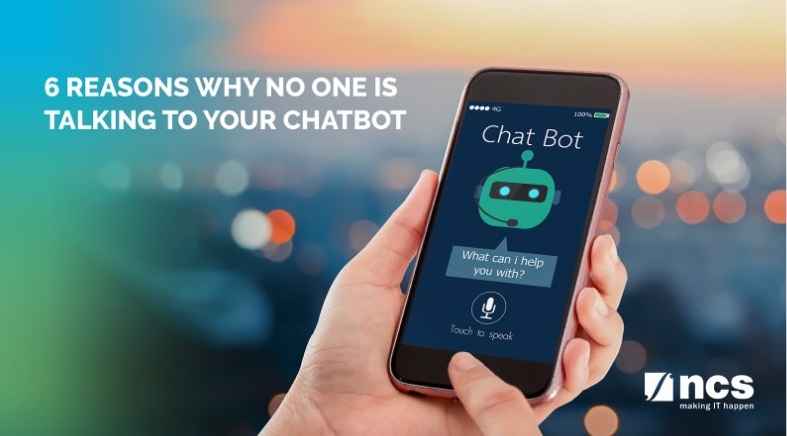 As a business owner, developer, or the person in charge of shepherding technical innovation into routine use - you must have come across many chatbots, and articles on chatbot technologies by now. Let us then discuss another issue, the conversational user experience.
As a business owner, developer, or the person in charge of shepherding technical innovation into routine use - you must have come across many chatbots, and articles on chatbot technologies by now. Let us then discuss another issue, the conversational user experience.
If you happen to own a chatbot, you would have experienced firsthand how much effort goes into setting one up. Usually, the main focus when delivering to tight deadlines is designing intents and entities for your chatbot. (Simply, intents are the intentions and requests of the end-user that your chatbot should support. And entities are the terms that shape the context around an intent).
However, the effort required to set up the chatbot’s responses is equally, if not more, important. Responses are what give the chatbot its personality, and are critical in shaping the conversational experience. Unfortunately, this is where most chatbots fall short.
1. Information Overload
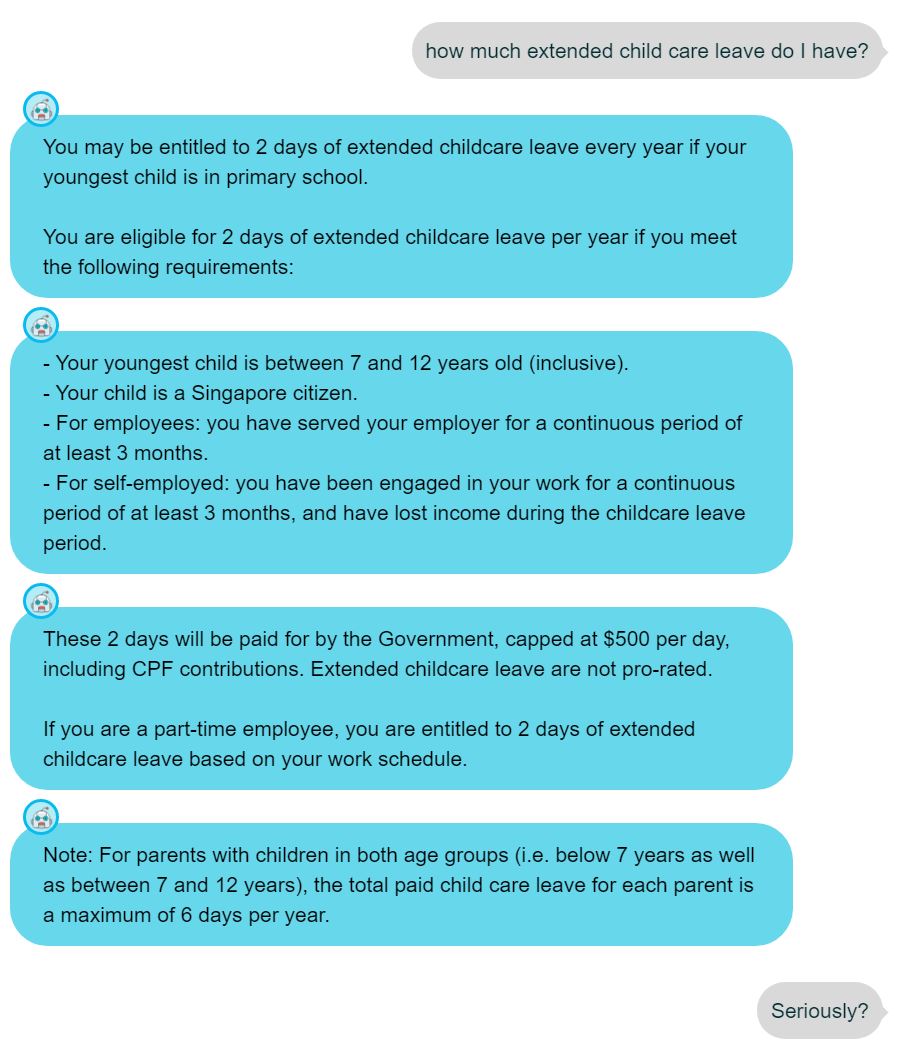 Congratulations! You’ve loaded your chatbot with everything that anyone needs to know, and it is now an encyclopedia of all your department’s policies and processes. But most users are here for a quick solution to their questions or problems, not to read a whole repository of information.
Congratulations! You’ve loaded your chatbot with everything that anyone needs to know, and it is now an encyclopedia of all your department’s policies and processes. But most users are here for a quick solution to their questions or problems, not to read a whole repository of information.
The chatbot in the example below is guilty of information overload, is yours?
As we can see from the example on the left, the chatbot's responses were most likely extracted from an FAQ page. Surely, this saves time and effort on the part of the developer. There are even artificial intelligence tools that help create such canned responses! But as creators of experiences, we must ask ourselves what is the added value for end-users when using a chatbot as compared to reading off a web page?
Do not lose sight of your original intent for a chatbot, which is to provide a pleasant online experience for consumers. Replicating your site content and online forms can be the easiest way to pull content into your chatbot’s knowledge base. However, for your chatbot to provide a personalised experience that differs from your FAQ page or an online form, due attention must be given to each of its responses.
2. Do You Understand?
 Conversely, a chatbot can respond with messages that are so generic or abrupt that the end-user is left wondering if the chatbot truly understood the question asked.
Conversely, a chatbot can respond with messages that are so generic or abrupt that the end-user is left wondering if the chatbot truly understood the question asked.
Here, this chatbot may be prompting the user for more information so as to generate a personalised response. However, the chatbot failed to articulate its good intention, leaving the user somewhat puzzled. The user cannot be sure if the chatbot understood the question, as the chatbot's response can apply to many different questions, not just the user's.
Does your chatbot respond with messages that help it ascertain what the user is asking?
3. Unnatural Responses
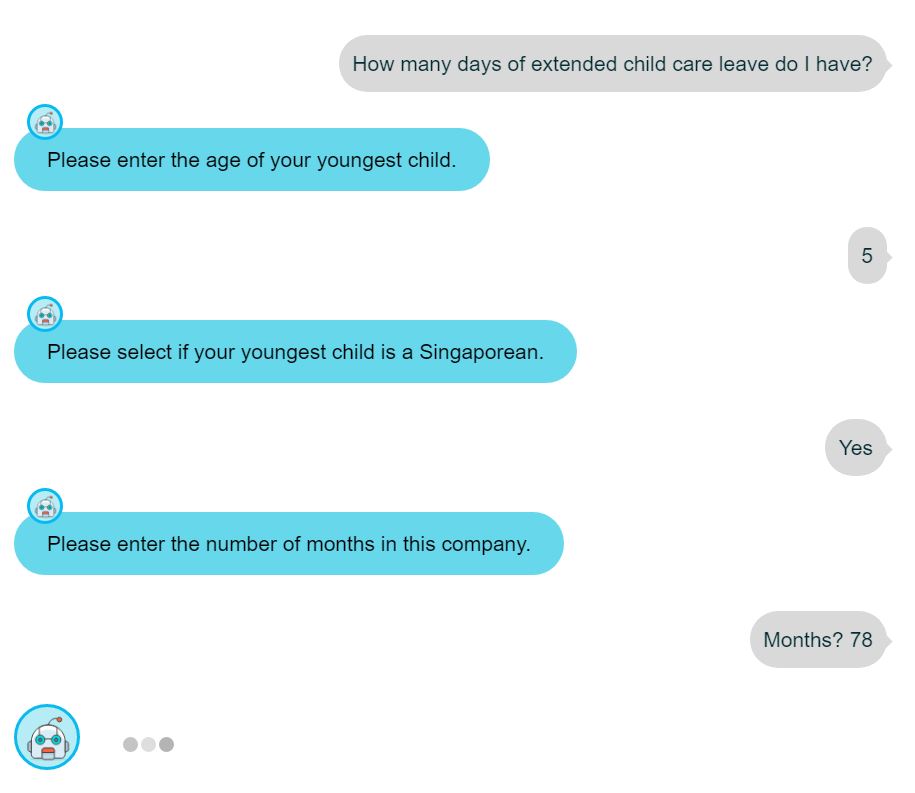 While repeating a question is fine, repeating the same message over and over again is abnormal. Humans don’t do that, and neither should your chatbot. Typically, we see many chatbots asking the same questions repeatedly when they do not get an expected response. Yes, these chatbots are still usable, just not natural. It can be a trying experience for end-users, the exact opposite of what you intended to achieve with your chatbot!
While repeating a question is fine, repeating the same message over and over again is abnormal. Humans don’t do that, and neither should your chatbot. Typically, we see many chatbots asking the same questions repeatedly when they do not get an expected response. Yes, these chatbots are still usable, just not natural. It can be a trying experience for end-users, the exact opposite of what you intended to achieve with your chatbot!
'Please enter your name,' and 'Please select an option below,' are phrases often used by chatbots. Doesn't this come across more like form filling than chatting?
We know that the onus is on the poor chatbot to collect consumer information, which is why the conversation seems almost like an interview or worse, an interrogation. Keep in mind though that human customer service officers have the same responsibilities, but refrain from speaking in such a robotic manner when assisting users with form filling.
4. Official Business Only?
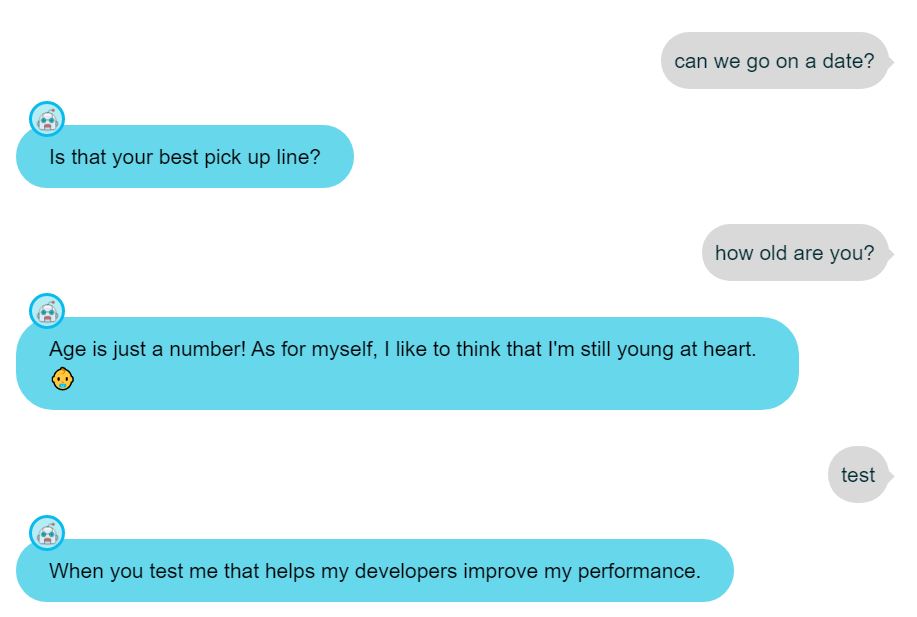 Equipping your chatbot with the ability to make small talk may seem unnecessary. Surprisingly, small talk is key to improving the end-user's evaluation of a chatbot's intelligence. Humans love to talk, and more often than not, small talk makes up a sizable portion of your chatbot’s chat history.
Equipping your chatbot with the ability to make small talk may seem unnecessary. Surprisingly, small talk is key to improving the end-user's evaluation of a chatbot's intelligence. Humans love to talk, and more often than not, small talk makes up a sizable portion of your chatbot’s chat history.
The end-user expects the chatbot to provide adequate answers in response to questions on business topics. However, if the chatbot can respond to random messages and keep the conversation going, the user is pleasantly surprised and more inclined to engage with your brand.
Does your chatbot freeze up when asked to tell a joke or when it receives a wedding proposal?
5. Too Many Apologies
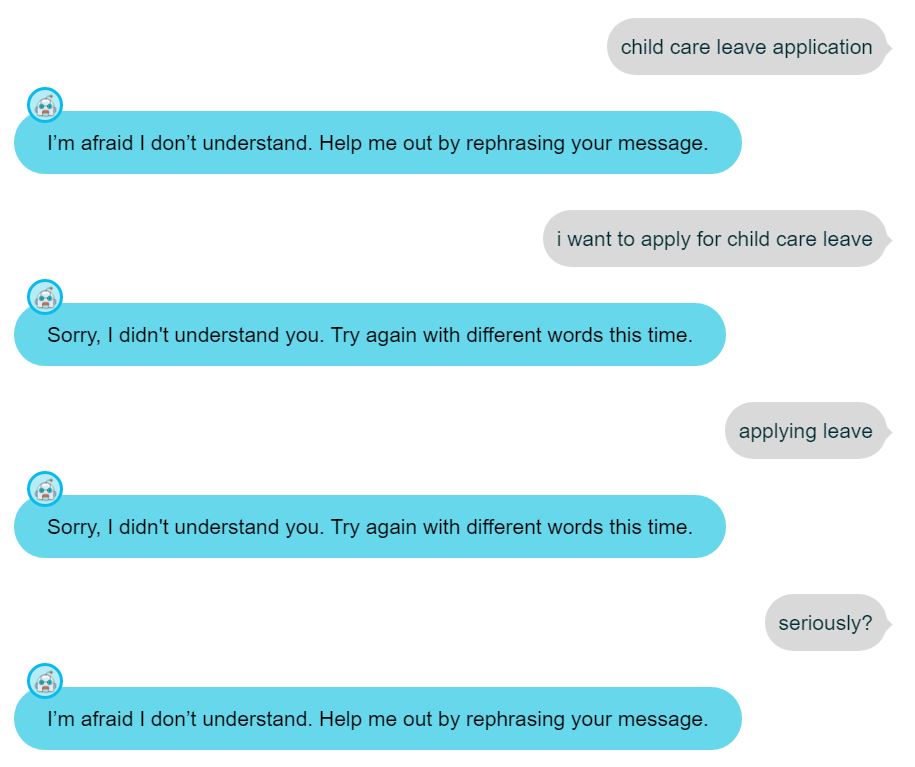 'Sorry, I don’t understand,' 'Sorry, can you repeat that,' 'Sorry, I'm afraid I can’t help you with that,' and 'Sorry, I'm still learning.' There are occasions when apologies are necessary, but too many ‘sorries’ can be a big deterrent for users.
'Sorry, I don’t understand,' 'Sorry, can you repeat that,' 'Sorry, I'm afraid I can’t help you with that,' and 'Sorry, I'm still learning.' There are occasions when apologies are necessary, but too many ‘sorries’ can be a big deterrent for users.
Is your chatbot apologising too much? In the example above, the chatbot genuinely does not understand the user's questions. Instead of apologising repeatedly, various conversation design techniques like Explicit Confirmation and Prompt Verbosity can be used to improve the chatbot’s follow-up responses.
6. Limited Feedback Limits Learning
Hoping to improve your chatbot but not getting enough feedback from consumers? Unfortunately, users only tend to provide feedback when they experience poor customer service or vice versa. Since users seldom provide feedback when requested, businesses end up losing out on valuable insights that would improve consumer-facing interactions. How can you glean those insights without forcing consumers to fill out feedback surveys? One solution would be to gather implicit feedback during the conversation between the chatbot and the end-user - a topic to be discussed in further posts.
Thoughts For The Future
If you've identified these problems in your chatbot, you're not alone. Most chatbots are implemented solely by developers. And while they are excellent at developing the chatbot's platform and artificial intelligence technologies, they may not always be best suited to building conversational experiences.
In the future, consider conversation design to make your chatbot's conversation flow more natural and improve your chatbot's conversational UX. Keep an eye out for the next series of posts where we discuss improving the conversational experience in depth.
Guilty as Charged?
Do you find the problems outlined in this post somewhat familiar? One would think that as humans that have been communicating all our lives, we would have sufficient experience in coding chatbots with similar language patterns. Why then, do we see so many chatbots in the market failing to deliver on conversational experience?
Even with all our superior communication skills, the ability to code appropriate prompts and responses for another person to hear or read takes practice. The next time you develop a chatbot, do consider conversation design. Its processes and techniques make conversation flows more natural and improves your chatbot's conversational UX.
If you would like to work with us to improve your chatbot, please send us a message!
